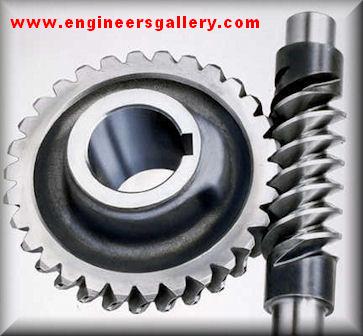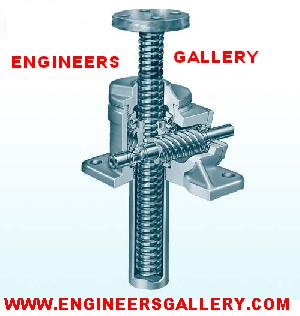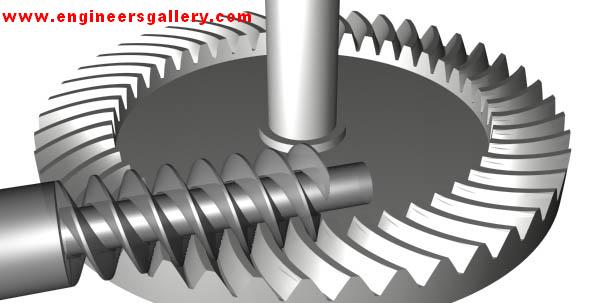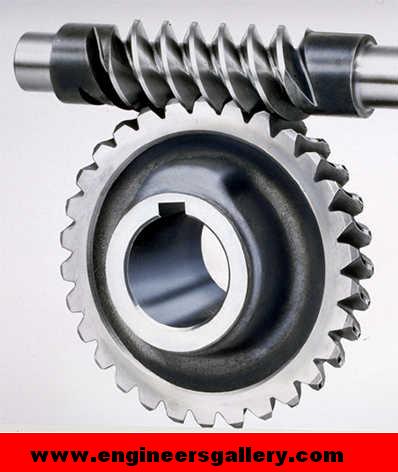SCREW GEAR
[nextpage title=”Description” ]
Why did we invent the Screw Gear?
- Linear to rotary or rotary to linear.
- Screws are inexpensive & available in any hardware store.
- You can make can make very fine, accurate, & precise adjustments.
- Eliminate the need and wait for special order mating worms.
- Immediate reduction of high speed to low speed with no additional gears.
- Strong build quality. Screw wares faster than Screw Gear, and screws are cheap.
- Great for hard to reach applications.
- Allows for quick and easy maintenance.
- Compatible with SAE & Metric screws and long threaded rods.

A screw gear is a gear arrangement in which a worm (which is a gear in the form of a screw) meshes with a screw gear (which is similar in appearance to a spur gear, and is also called a worm wheel). The terminology is often confused by imprecise use of the term screw gear to refer to the worm, the worm gear, or the worm drive as a unit.

Like other gear arrangements, a screw gear can reduce rotational speed or allow higher torque to be transmitted. The image shows a section of a gear box with a worm gear being driven by a worm. A worm is an example of a screw, one of the six simple machines.
[/nextpage]
[nextpage title=”Application” ]
APPLICATIONS
In early 20th century automobiles prior to the introduction of power steering, the effect of a flat or blowout on one of the front wheels will tend to pull the steering mechanism toward the side with the flat tire. The employment of a worm screw reduced this effect. Further development of the worm drive employs recirculating ball bearings to reduce frictional forces, allowing some of the steering force to be felt in the wheel as an aid to vehicle control and greatly reducing wear, which leads to difficulties in steering precisely.
Screw gear drives are a compact means of substantially decreasing speed and increasing torque. Small electric motors are generally high-speed and low-torque; the addition of a screw gear drive increases the range of applications that it may be suitable for, especially when the worm drive’s compactness is considered.
Screw gear drives are used in presses, rolling mills, conveying engineering, mining industry machines, on rudders, and worm drive saws. In addition, milling heads and rotary tables are positioned using high-precision duplex worm drives with adjustable backlash. Screw gears are used on many lift/elevator and escalator-drive applications due to their compact size and the non-reversibility of the gear.

In the era of sailing ships, the introduction of a screw gear drive to control the rudder was a significant advance. Prior to its introduction, a rope drum drive was used to control the rudder, and rough seas could cause substantial force to be applied to the rudder, often requiring several men to steer the vessel, with some drives having two large-diameter wheels to allow up to four crewmen to operate the rudder.
Screw gear drives have been used in a few automotive rear-axle final drives (although not the differential itself at this time). They took advantage of the location of the gear being at either the very top or very bottom of the differential crown wheel. In the 1910s they were common on trucks; to gain the most clearance on muddy roads the worm gear was placed on top. In the 1920s the Stutz firm used them on its cars; to have a lower floor than its competitors, the gear was located on the bottom. An example from around 1960 was the Peugeot 404. The worm gear carries the differential gearing, which protects the vehicle against rollback. This ability has largely fallen from favor due to the higher-than-necessary reduction ratios.
A more recent exception to this is the Torsen differential, which uses screws and planetary screw gears in place of the bevel gearing of conventional open differentials. Torsen differentials are most prominently featured in the HMMWV and some commercial Hummer vehicles, and as a center differential in some all wheel drive systems, such as Audi’s quattro. Very heavy trucks, such as those used to carry aggregates, often use a worm gear differential for strength. The worm drive is not as efficient as a hypoid gear, and such trucks invariably have a very large differential housing, with a correspondingly large volume of gear oil, to absorb and dissipate the heat created.
Screw gear drives are used as the tuning mechanism for many musical instruments, including guitars, double-basses, mandolins,bouzoukis, and many banjos (although most high-end banjos use planetary gears or friction pegs). A screw gear drive tuning device is called a machine head.
Reference : Wikipedia
[/nextpage]












2 comments